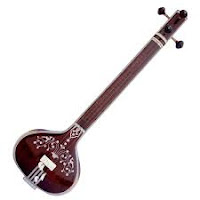5 Interesting Facts about Sama Veda
In this article I will talk about some interesting facts about Sama Veda.
The Sama Veda is the third out of the 4 Vedas and forms an important core of Hindu religious tradition. The other three Vedas are the Rig Veda, the Yajur Veda and the Atharva Veda.
Interesting facts about Sama Veda #1
Sama Veda is one of the oldest texts in any Indo-European language.
It is generally believed to have been composed around 1000 BC with some of the oldest parts of the Sama Veda can be dated to as early as 1700 BC.
At that time Europe and Arab were still barbarians!
Interesting facts about Sama Veda #2
The Sama Veda is the shortest of all 4 Vedas.The total number of verses in the Sama veda-Samhita is 1875 of which 1771 Verses are from the Rigveda and 99 verses belong to Sama Veda. Source.
Interesting facts about Sama Veda #3
The Sama Veda is the oldest musical arrangement and earliest human literature on music in the world. It contains all apsects of music including metre, mantra, chhanda and, linguistics.
The Sama Veda was compiled specifically so that its verses could be chanted at the ceremonies of the Soma-sacrifices. They were sung by Udgatar priests and essentially was a reflection of their world views.

Photo Courtesy: The Hindu
Interesting facts about Sama Veda #4
Sama Veda is very closely aligned with the Rig Veda.
The Sama Veda Samhita has taken many verses from the Rig veda Samhita especially from the eighth mandala and the ninth Mandalas.
Interesting facts about Sama Veda #5
 |
| Image Courtesy: amazon |
Here is what Subroto Roy has to say in the Musical heritage of the Sama Veda. Source.
Senior Sama Veda researcher Wayne Howard states emphatically in his Veda Recitation in Variance that what western musicologists call "Centonisation" was ustilised in the Sama Veda Samhita and its auxiliary texts. Centonisation is, simply, grouping of musical phrases and naming each group with the help of syllables and using them in different places of a composition to create new melodies.
That shows the greatness of our Hindu Rishis and the Hindu way of life.
--- END ---
That's it. Thank you for reading interesting Facts about Sama Veda. You may also like the following.
Interesting Facts about Rig Veda
Interesting Facts about Atharva Veda
An Introduction to Tantra
The Hindu World View
Introduction to Trika
Thank you for reading interesting Facts about Sama Veda. Please leave your comments and feel free to share with your friends and family.




Awesome!
ReplyDelete"It is generally believed to have been composed around 1000 BC with some of the oldest parts of the Sama Veda can be dated to as early as 1700 BC."
There are some theories which says that samveda was created by the lord brahma, what do you think about that?